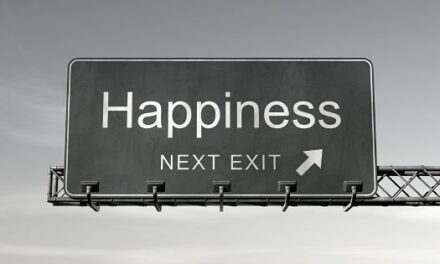I have always tried to get the message over to my staff of how important customers are. I don’t want my staff to give good or great customer service: I want them giving exceptional customer service. It is easy to give the customer what they come into our store for, anyone can do that; instead, I want my staff to find something extra to do for them. Not in the way of sales but in the way of service, something our customer walks out of the store and feels good about.

I try helping them use their own initiative for these ideas. At times I have given each staff member an exercise book they can use to record one experience they gave a customer during their shift that was exceptional. The stories within these books were amazing.
If I could choose just one tool I should have used consistently over the years, our customer book would be it. It’s a simple, a ruled notebook placed under the front counter. Three columns: the customer’s name, their description, and their standard purchase. For example: When we recognize regular customers, we ask their name, let’s say “Gillian.” In the description column we note something we discovered, e.g., “Two children. Daughter Claire, broken leg.” In the product column, we note their purchase, such as “White Vienna with sesame seed.” All information has to be kind!
When they come in, it might be possible to discreetly look in the book for their name if we cannot recall it, or we look at the name after they leave so that we might remember next time. I hate the embarrassment of forgetting customers’ names and having to ask again. This book helps personalize their shopping experience and helps to begin a bond. I love seeing those customers who first shopped with us more than twenty years ago. Because of the customer book, I will never forget their names.
I have seen signs in stores that speak in a negative language to the customer. I don’t like signs like, Shoplifters Handed to Police or If You Touch It, Consider It Yours. What sort of image or feeling does that give? These signs need to be removed immediately. If I walk into a store, I only want to see welcoming and positive signs. There are so many different signs speaking in a negative tone that do nothing for your customer except make them feel unwelcome.
I want my staff to think like a customer at all times, providing the service and product they would like to receive.
I was taught early on that for every ten great customer experiences you give, one will tell others, but for every bad customer experience, they will tell ten. People love negative stories, so they share them. It is harder to get positive stories out there to build a reputation in the community, but you have to empower your staff to give positive stories every day.
David Jenkin, in his book What Great Retailers Do, says: “Guaranteed, if you pay attention to the customer, the customer will pay attention to you.” I agree wholeheartedly with this. People mirror your behaviour in all aspects of life. Listen to their needs, and unless it is impossible, just do it. Jenkins also talks about how it takes a lot of determination not to lose passion for the customer, which reinforced my belief that to be loved by the customer, the owner must be seen on the floor (or behind the counter in our case).
No one survives without having a loyal following of customers. I cannot stress enough how important every customer walking through your door is. They are important to you and your survival. You can train customer service to anyone, but staff who continually give exceptional customer service are those that actually enjoy it and really want to give it.
There are so many types of customers and they fall into varying categories, and sometimes they change depending on the day they are having. Here are some examples.
The Busy Customer
These customers have much going on in their life and their body language will let you know they have not got the time for small talk. They want to come in, be served with speed and efficiency. Focus on what they want and say goodbye.
The Lonely Customer
They are coming in for company. They want their product but also conversation. Many people live on their own, have lost their partner, never married, had no children, or their children have grown up and left the home. These people want your time. They are interested in your life and want to share theirs, so take your time to ask them questions about their day, or share some of your life with them (no matter how insignificant you think the information may be): these people thrive on conversation.
The Difficult Customer
They will find something to complain about, no matter how hard you try to get it right. These people are having struggles in their life and haven’t yet worked out how to overcome this. At all times, keep your patience, even if they are wrong. Just listen to them and help them get what response it is that they are after without admitting blame.
The Angry Customer
They have had something gone wrong for them TODAY, and you are simply in the firing line. Or maybe last time they came in, they didn’t get served in the way they expected, and you are the one who’s going to pay for it. Or they may just live a life of anger. In this case, do everything you are trained to do and don’t aggravate them to escalate the situation. Instead, listen to them and try to help them by offering what solution you feel they are after. By doing this quite often, they calm down and realize how unreasonable they have been.
The Sad Customer
They have lost something or someone in their life recently and need comfort from you. Staying at home and suffering alone is not an option, so coming out needs to be a safe thing for them to do. If you are a hugger, and you think they could do with it, ask them first, then hug. I may get in trouble for recommending this, but I am a hugger and do this often with my customers. I do ask first. If it isn’t appropriate, or you do not feel comfortable, just listen to them and offer whatever support comes naturally to you. I have cried many times with customers in the front of my store when the story being told is an emotional one.
The Nonchalant Customer
They have no expression; they are just going about their daily shopping habits and don’t necessarily want a conversation. They will converse if drawn in and aren’t in a hurry, but they don’t want to have to wait longer than they should. Test the water with these customers. If you can think of a subject that looks like it would suit them, then try offering it—it may just brighten up both your days.
There are many more types of customers, and you need to be able to switch your style into the type of customer you are serving. They need to feel that shopping with you will be the experience they are searching for. Customers get this feeling in their subconscious, so it is up to us to ensure that we give them the right impression.
Every customer is important. Every customer deserves to be served with the best service you can offer. If your staff aren’t delivering this, you have two options: train them or lose them.



















